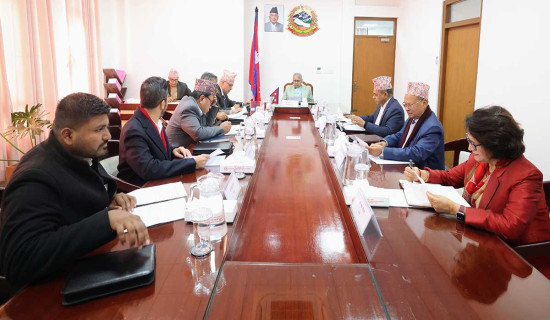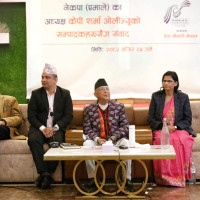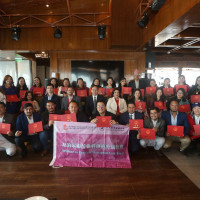- Thursday, 11 December 2025
More frequent droughts call for resilience
Kathmandu, June 5: Every year, June 5 is marked as World Environment Day with a special theme. This year, the theme is “Land Restoration, Desertification, and Drought Resilience,” and the slogan “Our land. Our future. We are #GenerationRestoration.”
The theme for this year centres on bringing back healthy land, preventing deserts from growing, and dealing with water shortages. These interconnected issues jeopardise food security, and biodiversity, and contribute to climate change. Land degradation, desertification, and drought pose significant threats to our planet’s well-being, experts said.
Desertification, the transformation of fertile land into desert, affects billions of people worldwide. Droughts, which are prolonged periods of dry weather, are becoming increasingly frequent and severe due to climate change, further straining our ecosystems, they said.
In Nepal, the frequency of drought has increased significantly since 2000, according to Dr. Madan Sigdel, Associate Professor at the Central Department of Hydrology and Meteorology, Institute of Science and Technology, Tribhuvan University.
While reviewing the years from 2000 to 2020, Dr. Sigdel said that the frequency of drought had increased in specific agricultural areas, primarily in Siraha, Saptari, and Dhanusa, shifting the narrative of drought from western Nepal. “Earlier, droughts were irregular,” he added, highlighting the changing patterns.
The Bheri-Babai Diversion Multipurpose Project is a multi-basin irrigation-cum-hydropower project located in the Surkhet District of Karnali Province in Mid-West Nepal and the Sunkoshi-Marin Diversion Multipurpose Project tunnel aims to facilitate year-round irrigation in fertile lands of five districts in the Madhesh Province.
However, these projects are yet to be constructed, and until they are completed, the main agriculture regions of the country are likely to face drought, which will impact agriculture production, he said.
A study conducted by Dr. Sigdel and the team on “Drought Monitoring over Nepal for the Last Four Decades and Its Connection with Southern Oscillation Index” emphasised the significance of understanding the relationship between drought and the El Niño-Southern Oscillation (ENSO) for effective water resource management and drought mitigation. Droughts were recorded in Nepal during both El Niño and non-El Niño years.
Among these, 1992 was the worst drought year, followed by the drought year of 2015. More than 44 per cent of the locations in the country were affected by drought conditions during these extreme drought events.
According to Dr. Sigdel, the monsoon rainfall variability of Nepal is influenced by local effects, the regional
circulation system, and large-scale circulation from the Indian and Pacific Oceans. Strengthening/weakening of the rainfall pattern has been identified and correlated with La Niña/El Niño years.
According to Dr. Hemu Kafle, a scientist at the Kathmandu Institute of Applied Sciences, there has been a change in the rainfall pattern, which will hinder production. Also, drought and changing rainfall patterns will lead to water scarcity, she said.
Dr. Kafle emphasized the need to focus on tree-based agriculture in urban and semi-urban areas to restore the land. Reviving streams by harvesting rainwater is another crucial aspect of reviving land and water resources, she added.
Nagendra Prasad Yadav, a forest environment expert, highlighted that the land in the Chure region was degraded and required a massive restoration campaign. He stressed that planting trees alone was insufficient, as it takes 20 years for a tree to grow, and there needs to be a plan for the next 20 years.
Yadav also emphasised the importance of growing bushes and grass, as they provide shade and help restore the land in the future. He suggested that the government initiate a campaign to plant drought-resistant species by studying the land and geography of the area to restore the land for the long term.
He warned that if the deterioration of the Chure range continued, the fertile Tarai belt could turn into a desert unless rampant extraction of riverbed materials and deforestation were controlled in the Chure region
















